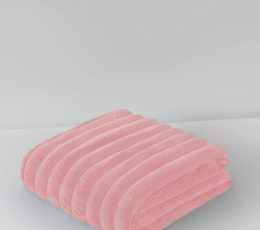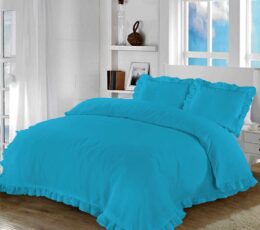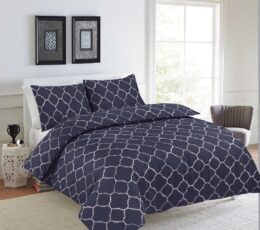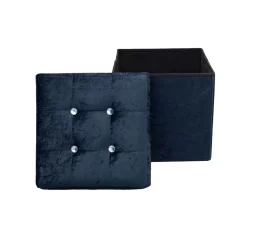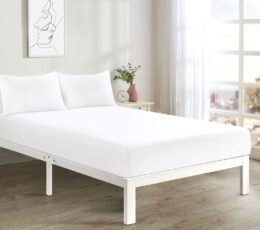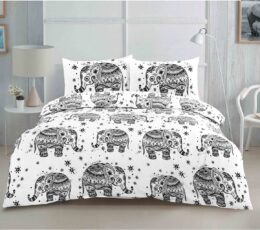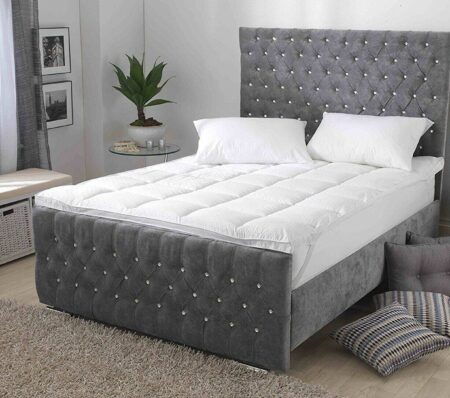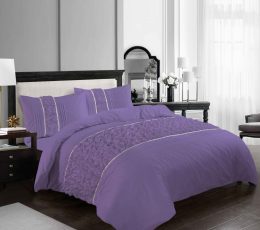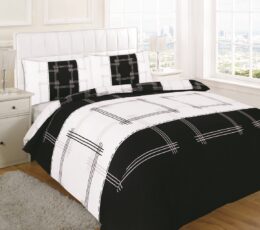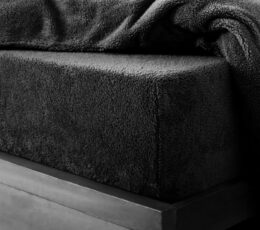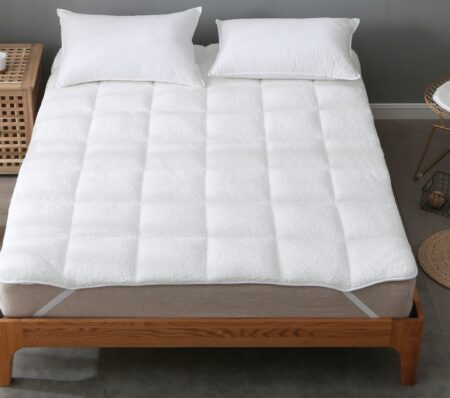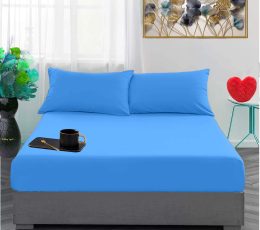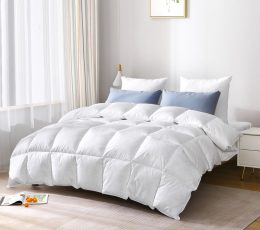A night’s sleep is essential for active days, and one often-overlooked factor that can significantly impact sleep quality is the pillow. Choosing the right pillow is crucial for providing adequate support to the head and neck, promoting proper spinal alignment, and ensuring a comfortable sleep environment. The pillow provides the required comfort to your neck and head to put them in a gentle position for perfect rest. In this perfect pillow guide, we will explore key factors while selecting the perfect pillow and various other personal aspects that help you find the perfect pillow for your sleep.

When to Change Pillow?
A sleep is a cornerstone of overall health and well-being, and the quality of your medical pillow can significantly impact the rest you receive. Over time, pillows accumulate allergens and dust mites and lose their original shape and support. Knowing when to replace your pillow is essential for ensuring optimal sleep hygiene and maintaining a comfortable sleep environment.
- General Guidelines: As a general rule of thumb, pillows should be replaced every 1-2 years. However, It depends on factors that includes the type of pillow, frequency of use, and personal preferences.
- Visible Wear and Tear: Inspect your pillow regularly for visible signs of wear and tear. Look for flattened or lumpy areas, frayed edges, or an overall lack of resilience. If your pillow has lost its original shape and support, it may be time for a replacement.
- Allergen Buildup: Pillows can harbor allergens like dust mites, dead skin cells, and other irritants. If you are suffering from allergies or respiratory issues, replacing your pillow every 1-2 years is crucial to prevent the buildup of allergens that can disturb your health and sleep quality.
- Morning Stiffness or Discomfort: If you wake up with stiffness, neck pain, or discomfort, your pillow may no longer be providing adequate support. Pay attention to how your body feels in the morning, as these physical cues can indicate that it’s time for a new pillow.
- Changes in Sleeping Preferences: As individuals age or experience changes in health, their sleeping preferences may evolve. If you find that your current pillow no longer meets your comfort needs, it might be time to explore alternative options that are better for your changing requirements.
Consider Your Sleeping Position Before Buying Pillow:
One of the most critical factors in choosing the perfect pillow is considering your preferred sleeping Position. Different positions require varying levels of support for maintaining proper spinal alignment and reduce the risk of waking up with aches and pains.
Our preferred sleeping position plays a crucial role in determining the type of pillow that provides optimal support and comfort. Different sleeping positions require different level of support for maintaining proper spinal alignment and reduce the risk of waking up with aches & pains.
- Back Sleepers: Look for a medium-firm pillow that supports the natural curvature of spine, promoting a neutral sleeping position.
- Side Sleepers: Opt for a firmer pillow to fill the gap between the shoulder & head, ensuring proper alignment & reducing strain on the neck.
- Stomach Sleepers: Choose a softer, flatter pillow to prevent excessive strain on the neck and maintain a more comfortable sleeping position.
Considering your sleeping position before shopping for a new pillow ensures that you select one that complements your individual needs, providing the support necessary for a rejuvenating night’s sleep. YOu can understand in better about which sleep position is better for night sleep.

Types of Pillow Filling
the type of pillow you choose plays a significant role in achieving restful slumber. Various types of pillows cater to different sleep preferences and needs, offering a diverse range of materials and designs to enhance comfort. Unrailve the different pillow filling comforts secrets.
1. Memory Foam Pillows:
Memory foam pillows is gaining immense popularity for their ability to contour to the shape of the head & neck, providing customized support. These pillows offer pressure relief and are particularly beneficial for individuals with neck pain or stiffness.
2. Feather and Down Pillows:
Feather and down pillows provide a luxurious and soft sleeping experience. Filled with the outer feathers or down clusters of ducks or geese, these pillows offer a plush feel and are highly moldable.
3. Latex Pillows:
Latex pillows are crafted from natural latex or synthetic latex, offering a supportive and responsive feel. They are naturally hypoallergenic & resistant to dust mites, making them an excellent choice for individuals with allergies.
4. Polyester and Synthetic Fill Pillows:
Pillows with polyester or synthetic fill are budget-friendly and hypoallergenic. These pillows come in varying firmness levels, catering to different sleep preferences. They are suitable for those allergic to natural materials and offer a practical and affordable option for a comfortable night’s sleep.
5. Buckwheat Pillows:
Buckwheat pillows are filled with buckwheat hulls, providing firm and adjustable support. These pillows allow for better air circulation, keeping them cool throughout the night. This pillows are ideal for those who prefer a unique and customizable sleeping surface.
6. Gel Pillows:
Cooling Gel pillow incorporate cooling gel technology to regulate temperature and dissipate heat, providing a refreshing sleep experience. These pillows are suitable for individuals who tend to sleep hot and looking for a solution to maintain a cool and also a comfortable sleep environment.
7. Water Pillows:
Water pillows feature a water-filled chamber that can be adjusted for achieving the desired level of firmness and support. These pillows are customizable to individual preferences, making them suitable for those who need variable support for their head and neck.
8. Specialty Pillows:
Specialty pillows are designed to address the specific needs or health conditions. Body pillows provide additional support during pregnancy, wedge pillows are helpful for acid reflux, and cervical pillows offer targeted support for the neck. Choosing a specialty pillow depends on individual requirements.
9. Microbead Pillows:
Microbead pillows are filled with many tiny polystyrene beads, creating a supportive yet flexible sleeping surface. These pillows contour the shape of the head and neck and are often used for travel or as a versatile support pillow.
10. Shredded Memory Foam Pillows:
Shredded memory foam pillows offer the benefits of memory foam in a more adjustable form. The shredded foam allows users to customize the loft and firmness, providing a balance between support and comfort. Consider our guide on how to choose the right filling for more detail.
Tips to Buy Pillow
When venturing to purchase a pillow, it’s essential to consider individual preferences, sleeping habits, and overall comfort requirements.
1. Sleeping Position: Before selecting a pillow, take into account your preferred sleeping position. Back sleepers may get benefit from a medium-firm pillow, while side sleepers often find firmer options more comfortable. Stomach sleepers typically prefer a softer, flatter pillow to avoid strain on the neck.
2. Pillow Fill Material: Understand the characteristics of different pillow fill materials. Memory foam provides contouring support, feather and down offer a plush feel; latex ensures durability, and synthetic fills cater to various firmness levels.
3. Allergies and Sensitivities: If you have allergies or sensitivities, go for hypoallergenic pillow options such as latex or synthetic fills. These materials resist common allergens, contributing to a healthier sleep environment.
4. PillowSize: Consider the pillow size in relation to your bed and personal comfort. Single,Double, and king sizes are common options. Choosing the right size ensures proper coverage and support for your head and neck.
5. Trial Period: Some pillow manufacturers offer trial periods, allowing you to test the pillow and assess its comfort before committing to a purchase. Take advantage of such opportunities to ensure the pillow meets your expectations.

Pillow Care Instructions
Caring for your pillows is essential to ensure their longevity, maintain cleanliness, and provide ongoing comfort. Follow these care instructions to keep your pillows in optimal condition:
1. Pillow Protectors: Investing in pillow protectors is a proactive step in maintaining pillow hygiene. These covers act as a barrier, protecting against dust mites, allergens, and stains. Regularly wash the pillow protectors to keep them clean and effective.
2. Washing Pillows: Check instructions provided by the manufacturer before washing your pillows. While some pillows are machine washable, others may require spot cleaning. Use a mild detergent & follow the recommended washing guidelines. Ensure the pillows are thoroughly dry before returning them to the bed.
3. Fluffing Pillows: Regularly fluffing your pillows helps maintain their shape and support. This is particularly important for pillows with natural fill materials like down and feathers, as it prevents clumping & ensures even distribution of the fill.
4. Sunning Pillows: On a sunny day, consider airing out your pillows by placing them in the sun for a few hours. Sunning helps eliminate moisture, reduces odors, and freshens up the pillows. Be cautious not to leave them exposed for too long, especially if they have memory foam or other materials that may be sensitive to prolonged sunlight exposure.
5. Replace When Necessary: Keep an eye on the condition of your pillows and replace them when signs of wear and tear become evident. If your pillows are no longer providing adequate support or if they emit unpleasant odors even after cleaning, it’s time to consider a replacement. For More tips our pillow care tips are there to make your pillow fresh.
FAQs
1. How often should I replace my pillow?
Pillows should generally replaced every 1-2 years. However, individual factors such as the type of pillow, frequency of use, and personal preferences can influence the replacement timeline.
2. What’s the best pillow for my sleeping position?
The best pillow for your sleeping position depends on whether you are a back, side, stomach, or combination sleeper. Back sleepers often prefer medium-firm pillows; side sleepers benefit from firmer options, and stomach sleepers generally find softer, flatter pillows more comfortable.
3. Are there pillows suitable for allergies?
Yes, hypoallergenic pillows are designed to resist allergens such as dust mites and are suitable for individuals with allergies or sensitivities. Materials like latex, synthetic fills, and certain memory foams are known for being hypoallergenic.
4. How do I clean my pillows?
Check instructions provided by the manufacturer before cleaning your pillows. Many pillows are machine washable, while others may require spot cleaning. Pillow protectors can also be used to keep pillows clean and prevent the buildup of allergens.
5. What’s the difference between memory foam and other pillow fills?
Memory foam pillows are known for their ability to contour to the shape of the head & neck, providing personalized support. Other fills like feather and down offer a luxurious feel, latex provides durability, and synthetic fills cater to various firmness levels.
6. How many pillows do I need on my bed?
The number of pillows on your bed is a personal preference. Most individuals use one to two sleeping pillows for head and neck support. Decorative pillows are optional and can be added based on aesthetic preferences. Specialty pillows may be included based on individual needs.
7. Can I wash all types of pillows in a washing machine?
Not all pillows are machine washable. Check the care instructions for each specific type of pillow. Memory foam pillows, for example, are typically not machine washable. Pillow protectors can be used to keep pillows clean and may be machine washable.
8. Are there pillows suitable for specific health conditions?
Yes, specialty pillows are designed to address specific health conditions. For example, body pillows are beneficial for pregnant women, and wedge pillows can help with issues like acid reflux.
9. Can I use the same pillow if my sleeping position changes?
If your sleeping Position changes, it’s advisable to reassess your pillow choice. Choosing a pillow that aligns with your current sleeping preferences ensures optimal comfort and support.
10. How do I know if my pillow needs replacement?
Signs that your pillow may need replacement include visible wear and tear, flattened or lumpy areas, waking up with stiffness or discomfort, or an overall loss of support. Regularly assess the condition of your pillow and replace it when these signs become apparent.
While going through this pillow guide, we came to conclude that choosing the best pillow involves considering factors such as when to replace your pillow, your preferred sleeping position and the type of pillow fill that best suits your needs. Invest time in selecting the right pillow can significantly enhance your sleep quality, leading to improved overall health and well-being. We recommend going with a pillow that matches your comfort and your style for better results.



